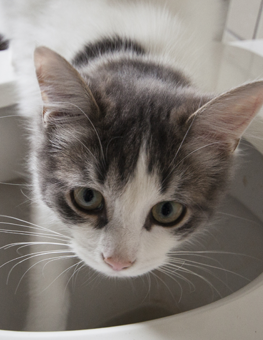EPA Evaluation of Pet Spot-on Products
In 2009, the EPA became concerned about the large number of reports of incidents involving topical spot-on flea and tick products.
To further its understanding of the issue, the EPA required enhanced reporting for the year 2008 from all manufacturers of EPA registered topical pesticide products, which encompassed all classes of pesticide active ingredients, including cyphenothrin, phenothrin, permethrin, imidacloprid, dinotefuran, fipronil, amitraz, etofenprox, S-methoprene, pyriproxyfen, and metaflumizone. Below is a copy of the EPA’s Summary of findings from the enhanced reporting as well as the changes proposed by the EPA for the future.
(When reviewing the incident reports, as the EPA itself makes clear, these incident reports are not investigated or validated by the Agency for accuracy in any manner; they are taken at face value and no efforts made to screen out demonstrably false or otherwise inaccurate reports.)
Results of the Evaluation of Pet Incidents
- For both dogs and cats, the main organ systems affected were the dermal, gastrointestinal, and nervous systems and, although most reports were classified as minor, all products had some reported deaths and major incidents.
- In dogs, small dogs and dogs under 3 years were overrepresented in the reports. Some of these reports may be attributed to applying a product labeled for a larger dog on a small dog.
- In cats, an important problem was the application on cats of products labeled for dogs.
Mitigation Measures EPA Will Pursue to Prevent Future Incidents
- Dosing.The EPA is pursuing requiring label and/or packaging changes that would result in more narrow pet weight ranges per vial size.
- Improve labeling to avoid confusion between dog and cat products.
- Make labels more understandable
- Tighter registration criteria including 2-year conditional registrations, standardized reporting, pre-market clinical trials and post-market surveillance.
(EPA Summary Report follows)




EPA or FDA registrations – the Truth.
All products that are designed to kill fleas and ticks by treating the skin with a formula that does not cross the skin barrier are regulated by, and are registered with, the EPA. This includes Hartz UltraGuard®, Frontline®, Advantage® and other brands sold through both retail stores and veterinarians. Frontline® and Advantage® are NOT prescription products nor are they registered with the FDA. In accordance with law, you will find the EPA Registration number on the package of every product that is registered with EPA.
In addition, Frontline Plus® for cats contains two ingredients, Fipronil and Methoprene. Methoprene is the same ingredient used in Hartz UltraGuard® Flea Egg & Flea Larvae treatment for Cats and Kittens. However, our UltraGuard product contains just 2.9% Methoprene, where Frontline Plus® contains 11.8%. With our formula, we are able to use much less methoprene in our product while maitaining excellent efficacy. In addition, methoprene is rated as the lowest toxicity level by the EPA, level IV, which does not require any signal word on the packaging.


As you can see, Methoprene used in products like Hartz UltraGuard® Flea Eggs & Larvae treatment for cats and Kittens totaled just over 1000 reactions for all of 2008, while the products the consumer pointed out at ‘safe alternatives’ (i.e. Frontline® (which contains Fipronil) and Advantage® (which contains Imidacloprid), accounted for over 15,000 reactions for 2008.
2008 Adverse reactions reported to EPA


As you can see from the above chart, Hartz topical treatments for cats and dogs accounted for a total of 2,513, or 5%, of the over 52,000 adverse reactions reported.
Unfortunately, there is a lot of misinformation on the internet about flea and tick products. Hartz is working constantly to offer factual information about flea and tick products, including a education tab on our Facebook page that will link you directly to the EPA website for accurate, independent information. Many times consumers assume they have used a Hartz product or assume they’ve used the product correctly when they have actually purchased a competitive product or have used the wrong product on their pet.
Hartz monitors our adverse reactions very closely to watch for any possible product issue or safety concerns. We reach out to every consumer who either posts a complaint on the internet or emails us directly. We take safety very seriously and work tirelessly to provide the very best product to consumer and their pets.
Mitigation Measures EPA Will Pursue to Prevent Future Incidents – Relevant to Hartz
- Dosing. The EPA is pursuing requiring label and/or packaging changes that would result in more narrow pet weight ranges per vial size.
- Hartz did not have to change any of our weight ranges
- Improve labeling to avoid confusion between dog and cat products.
- Hartz already had large images of dogs and cats prominently display on our package, so EPA did not require a change.
- Make labels more understandable.
- Hartz made recommendations to EPA about THEIR required launguage and how to make it easy to understand. EPA has since issued our suggested language across topicals for all manufacturers.
- Tighter registration criteria, including 2-year conditional registrations, standardized reporting, pre-market clinical trials and post-market surveillance
- This was issued across all companies and Hartz is in compliance.
Learn more about the EPA’s Evaluation of Pet Spot-On Products












